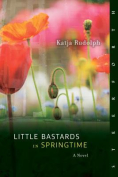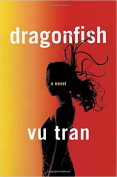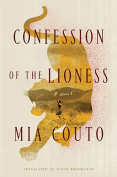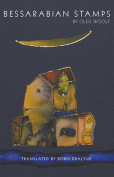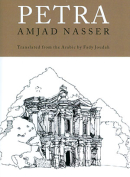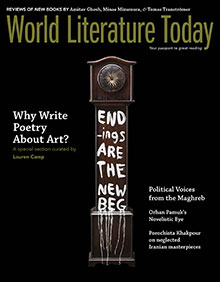Confession of the Lioness by Mia Couto
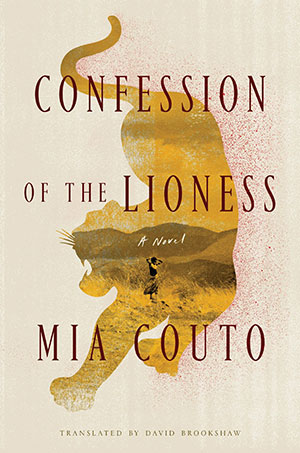 David Brookshaw, tr. New York. Farrar, Straus & Giroux. 2015. ISBN 9780374129231.
David Brookshaw, tr. New York. Farrar, Straus & Giroux. 2015. ISBN 9780374129231.
Nominated for the Man Booker International Prize, Mia Couto’s Confession of the Lioness tackles large issues in deceptively simple ways. Devices such as diary entries, letter writing, firsthand accounts, magical realism, and proverbs conspire to tell the story of the fate of a poor village after the end of the civil war in Mozambique (ca. 1981–92). Kulumani, a place where “There’s no law . . . , no government, and even God only visits us occasionally,” is a perfect setting to demonstrate the social, economic, and psychological state of common people following three decades of almost continuous war.
The story is told in sixteen chapters, eight from the perspective of village resident Mariamar and eight from the perspective of hunter Archangel “Archie” Bullseye. Lions have been attacking and killing women in the village, and the local administration appeals for help in eradicating the problem. Mariamar’s sister, Silencia, is the most recent victim of the lions when the story begins. As it turns out, Archie had visited the village some sixteen years earlier when he was called in to kill a crocodile. He unwittingly saved Mariamar from being raped by the lone law enforcement officer in the area then seduced and promptly forgot her. In the present of the novel, her parents shut her away while the hunter visits to prevent her from leaving Kulumani. The story is as simple as it is layered with complications and reflections on humanity.
Marimar and Naftalinda are both notable characters whose plights speak to the devastating condition of women in the village. At the story’s outset, Marimar is thirty-two and still lives with her parents. She is infertile, and “[a]n infertile woman in Kulumani is less than a thing.” She suffered immensely at the hands of her father and during the war, and experienced paralysis in her legs. She is taken to the local Catholic church to heal. There she meets Naftalinda, the indomitable first lady, married to the administrator for the village. When she meets Naftalinda at the church she is known as Oceanita. She was a large child, and her family delivers her into the care of Father Amoroso, “for so big a body, she would need many souls.” This kind of symbolism is an integral part of the novel, and while the work relies heavily on symbolism, its language, possibly because it is a translation, is somewhat muted and overshadowed by the intrigue of the story itself.
There are many internal enemies in the village, leaving readers to wonder which is the greater threat: the lions or the people in the village. By turns, it is revealed that the “enemies” all have a vested interest in the subjugation of women. Tradition is an enemy that creates dispossessed women. The novel explores the question of what happens to a people after sustained wars and sustained poverty. Socioeconomic injustice, social exclusion, rape, and heinously violent crimes are featured in a nonintrusive manner that invites readers to interrogate these issues. The novel is an achievement in its understated presentation and vital content.
Adele Newson-Horst
Morgan State University











